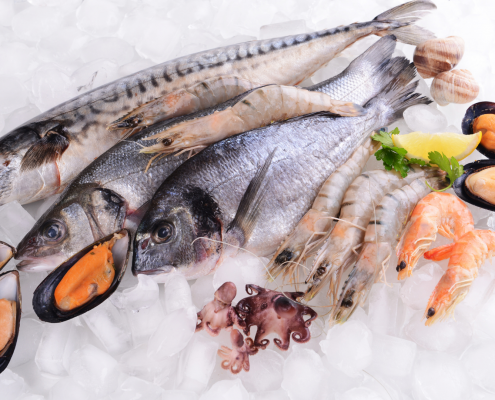A ‘blue food’ revolution could feed the world without ruining the planet
By: Parisa Hashempour
Global demand for seafood is poised to double by 2050. By investing in new technology and improving fisheries practices, researchers estimate that supply can be increased yearly by 8%. This could be translated into a reduction of 166 million cases of nutrient deficiency.
Compared with chicken, trout has 19 times more omega-3 fatty acid, oysters and mussels are 76 times richer in vitamin B-12 and have five times more iron, and carp is nine times more calcium-rich.
By decreasing production costs and increasing accessibility of blue foods, “there will likely be a shift away from land-based foods like chicken, beef and dairy,” explains marine ecologist Bren School.
One of BFA’s studies explains that foods produced through aquaculture — such as salmon, tilapia, catfish, and carp — has a similar environmental footprint to chicken, the lowest-impact land-based meat. “Many fish and invertebrates produced for food emit fewer greenhouse gases, less water pollution and use fewer land and water resources than land-based animal foods,” says Dr Richard Newton, co-author of the study.
He adds that there are plenty of opportunities for reducing the impact of existing blue food systems. Changing our diet to include more species with lower environmental footprints could help too.



 andriyyavorivskyiphotos
andriyyavorivskyiphotos Elliot Connor
Elliot Connor